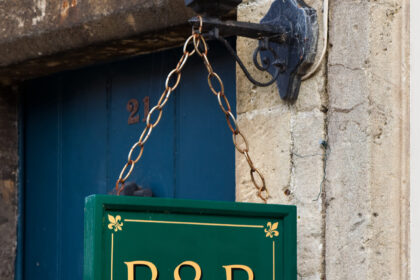Your portfolio is your most powerful marketing tool. It’s not just a gallery of your past projects, it’s your personal brand story, skills showcase, and conversion machine. A well-structured portfolio can help you stand out in a crowded industry and turn casual visitors into paying clients.
We’ll cover step-by-step how to build a web design portfolio that not only looks stunning but also converts clients effectively.
1. Start with a Strong Foundation: Know Your Audience
Before you start designing your portfolio, define who your target audience is.
Ask yourself:
- Are you targeting startups, agencies, or established brands?
- Do you want to focus on eCommerce, SaaS, or mobile design?
- What industries do your dream clients belong to?
Once you have clarity, tailor your portfolio content and visual style to match their expectations. For example, tech startups love modern, minimal designs with bold typography, while eCommerce brands might prefer vibrant visuals that highlight conversion-driven results.
Pro Tip: Your portfolio should speak the language of your ideal client, not just showcase your skills.
2. Craft a Powerful Introduction Section
The first impression matters! When a potential client lands on your portfolio website, they should instantly understand:
- Who you are
- What you do
- Why you’re the right designer for them
Write a short, engaging introduction that communicates your expertise and personality.
Example:
“Hi, I’m Alex, a UI/UX designer specializing in creating conversion-focused websites for modern SaaS brands. My goal is to design interfaces that are not only beautiful but also drive measurable business results.”
This kind of introduction sets the tone and builds trust quickly.
3. Showcase Your Best Projects (Not All of Them)
One of the biggest mistakes designers make is including every project they’ve worked on. Clients don’t have time to scroll through twenty mediocre projects—they want to see your best five or six that clearly represent your skill level and design thinking.
For each project, include:
- A short project summary: What was the client’s goal or challenge?
- Your role: Were you the UI designer, UX researcher, or full-stack designer?
- Design process: Briefly describe your workflow—research, wireframing, prototyping, testing.
- Final visuals: High-quality mockups or case study visuals.
- Results: Showcase measurable outcomes (e.g., “Improved user retention by 35%”).
Pro Tip: Visual storytelling is key. Use mockups, animations, and before/after comparisons to make your projects come alive.
4. Focus on Case Studies, Not Just Screenshots
Clients want to know how you think, not just what you designed. That’s why case studies outperform static screenshots.
A strong case study should answer:
- What problem were you solving?
- What was your design strategy?
- How did you approach UX and usability testing?
- What tools and techniques did you use?
- What was the final outcome or business impact?
This helps clients visualize how you’ll approach their project, making it easier for them to trust you.
5. Make It Visually Consistent and User-Friendly
As a web designer, your portfolio itself is a reflection of your design philosophy. If your site is slow, cluttered, or confusing, it sends the wrong message.
Here are a few design tips:
- Use a clean layout with plenty of white space.
- Stick to a consistent color palette that aligns with your personal brand.
- Keep typography readable and professional.
- Use responsive design to ensure your portfolio looks perfect on all devices.
- Make sure your visuals are optimized for fast loading—clients won’t wait for heavy images to load.
Pro Tip: Your portfolio should feel like the kind of design experience you want to deliver to clients.
6. Add a Personal Touch with an “About Me” Page
Your “About” page is your chance to connect on a human level. Instead of writing a stiff, corporate-style bio, share your design journey, your passion for creativity, and what inspires your work.
Include:
- Your background and experience
- Your design philosophy
- Tools and technologies you specialize in
- A personal fun fact or hobby to make you relatable
Example:
“When I’m not designing, you’ll find me sketching product ideas, experimenting with new color palettes, or exploring design trends in the digital world.”
This helps potential clients see you as approachable and genuine.
7. Include Testimonials and Social Proof
Testimonials build instant credibility. Ask your past clients for short, specific feedback that highlights your communication, creativity, and problem-solving skills.
Example testimonial:
“Working with Alex was a seamless experience. He understood our brand voice immediately and delivered a clean, high-performing website that boosted our conversions by 40%.”
You can also include:
- Client logos
- Links to case studies or reviews
- Any awards or recognitions
Social proof gives visitors the confidence to reach out to you.
8. Don’t Forget the Call to Action (CTA)
Your portfolio shouldn’t just impress visitors—it should convert them. Every page should guide users toward contacting you.
Use clear, action-oriented CTAs such as:
- “Let’s Work Together”
- “Book a Free Consultation”
- “Get a Custom Quote”
Make your contact form simple and accessible. Include links to your social media profiles and email address for easy communication.
Pro Tip: Place your CTA strategically—on the homepage, project pages, and at the end of your About page.
9. Optimize Your Portfolio for SEO
If you want your portfolio to appear in Google searches, you must optimize it properly.
Here’s what to do:
- Use relevant keywords like “UI/UX Designer,” “Freelance Web Designer,” or “Website Design Portfolio.”
- Write meta titles and descriptions for each page.
- Add ALT tags to your images.
- Make your site mobile-friendly and fast-loading.
- Include internal links between pages.
This will help your portfolio rank higher in search results and attract organic traffic from clients actively looking for designers.
10. Keep It Updated and Fresh
Your portfolio is a living document. As you grow and improve, so should your portfolio. Update it regularly with:
- New projects
- Revised case studies
- Latest client testimonials
- Improved visuals and performance
A portfolio that hasn’t been updated in two years gives the impression that you’re inactive. Stay relevant and fresh to attract the best opportunities.
Conclusion
Your web design portfolio isn’t just a showcase—it’s a strategic tool to convert visitors into paying clients. By combining strong visuals, storytelling, SEO, and user experience, you can create a portfolio that reflects your professionalism and expertise.



